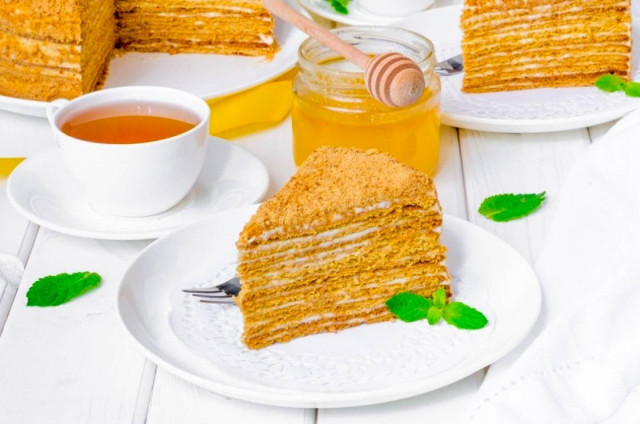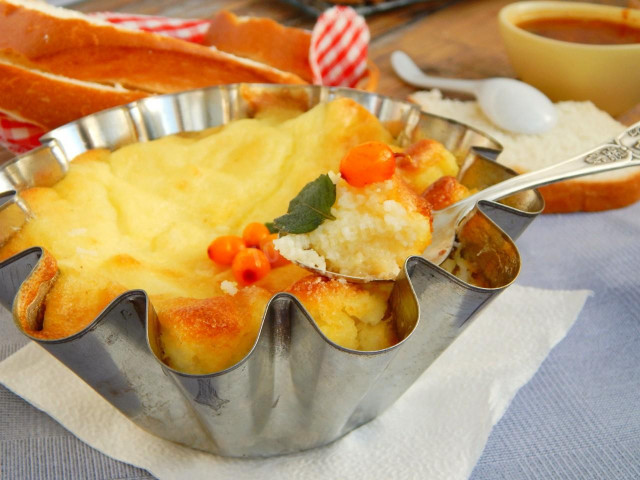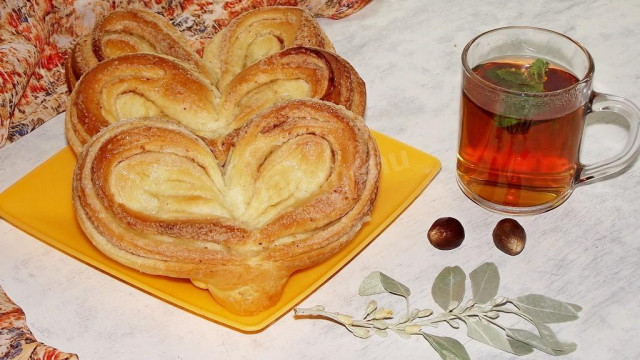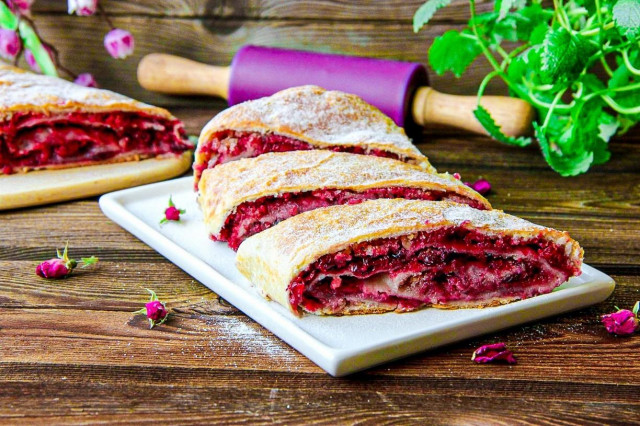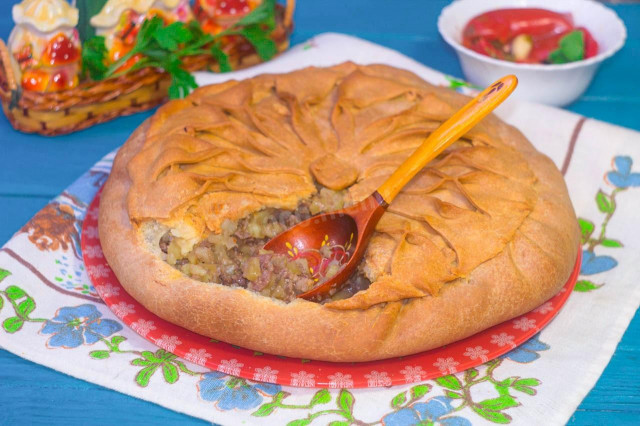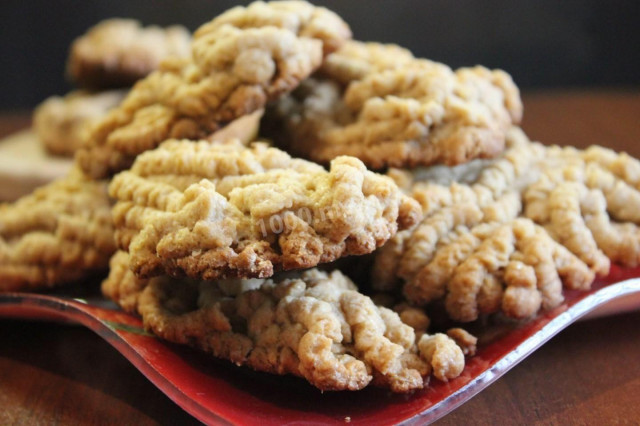Composition / ingredients
Step-by-step cooking
Step 1:
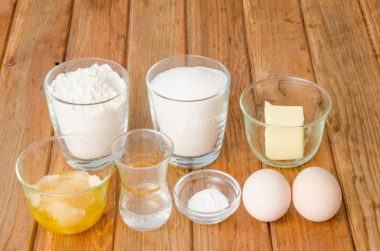
How to make a classic honey cake with sour cream? Prepare the products for the cakes. Choose natural, fragrant honey, the taste of the cake will depend on its taste.
Step 2:
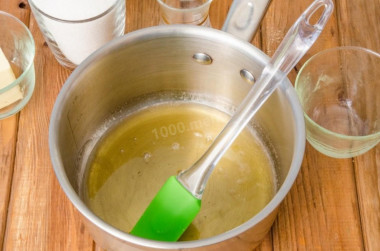
How to make cakes? Put the honey in a saucepan and put it on a small fire. Wait until the honey is completely melted and warm it up to a very hot state. But don't bring it to a boil! Remove the saucepan from the heat.
Step 3:
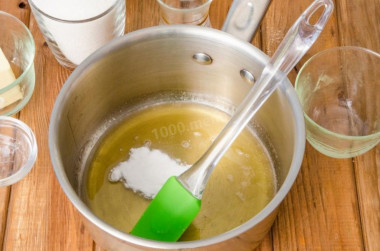
Add soda to the hot honey.
Step 4:
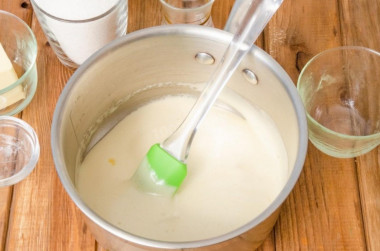
Mix everything thoroughly. You should get a lush and thick foam.
Step 5:
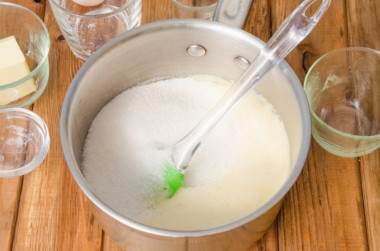
Add sugar and add water.
Step 6:
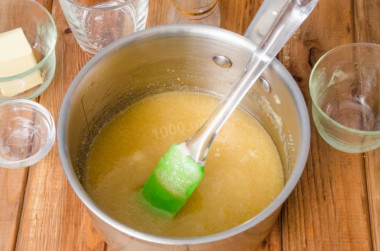
Mix. The mass will calm down, the foam will settle.
Step 7:
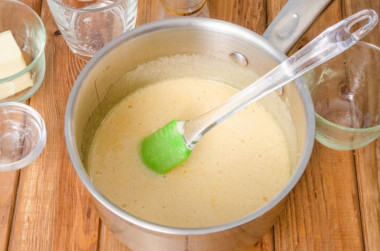
Return the saucepan to the stove for a small fire. Warm up the mixture, stirring constantly, until the sugar dissolves as much as possible. The mixture will turn into a lush foam again.
Step 8:
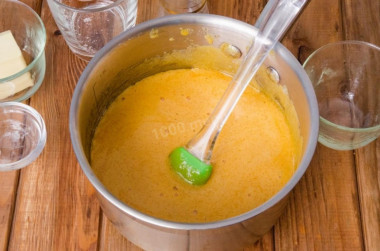
Next, with constant stirring, boil the honey-sugar mixture to a caramel color. It will take quite a bit of time, literally 4-5 minutes.
Step 9:
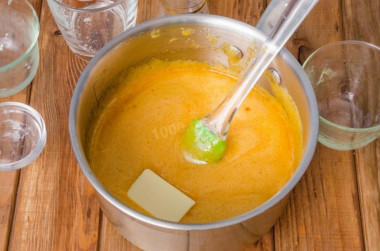
Remove the saucepan from the heat and add the butter. Stir until it melts completely. Leave the honey mass for 10-15 minutes so that it cools down a little.
Step 10:
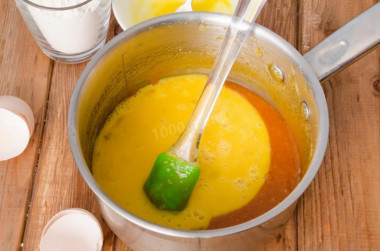
In a separate container, break the eggs and shake them lightly with a fork. When the mixture cools down enough, add the eggs to it and immediately stir everything actively and quickly.
Step 11:
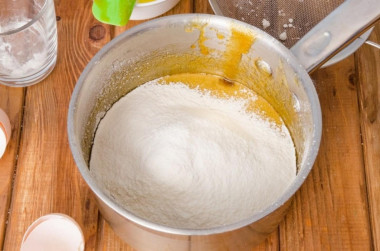
Begin to introduce the sifted flour in parts.
Step 12:
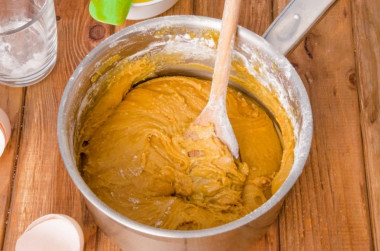
And start kneading the dough. Mix it with a spoon first.
Step 13:
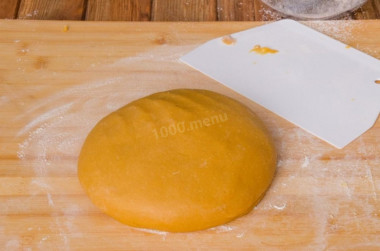
And when the dough becomes thick enough, go to the desktop and mix the remaining flour into it. The finished dough for honey cake should be very tender, soft and slightly sticky. If the dough turns out to be excessively sticky and spreads over the work surface, then add a little more flour.
Step 14:
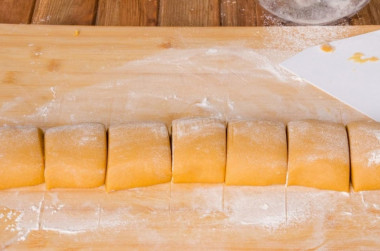
Divide the finished dough into 8-10 parts.
Step 15:
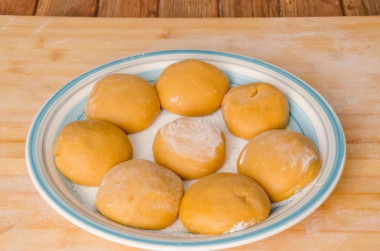
Carefully roll each part of the dough into a ball, spread them all on a platter, cover with foil and send to the refrigerator for 40 minutes.
Step 16:
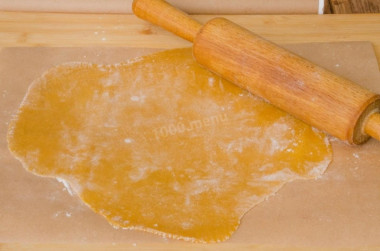
Take one ball out of the refrigerator. Roll out the dough immediately on baking paper. If it sticks strongly, then the paper and rolling pin can be lightly dusted with flour. Roll out the dough into a layer about 2-3 mm thick.
Step 17:
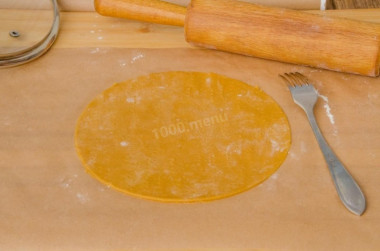
Cut out a circle of the desired diameter from the formation. I made cakes with a diameter of 20 cm using an ordinary plate. Collect the cuttings from the cakes and roll them out again (I collected half of the cuttings from the cakes and I got an additional 3 cakes from them, and baked the cuttings from the second half of the cakes and they went to my cake sprinkling). The surface of the cake is thickly pricked with a fork.
Step 18:
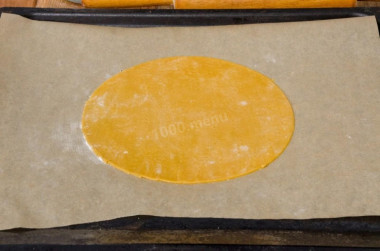
Transfer the sheet with the cake to a baking sheet and send it to the oven.
Step 19:
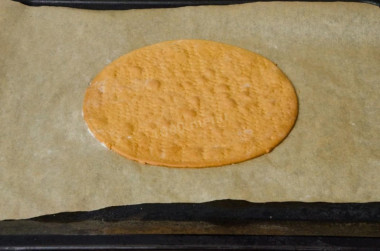
Bake the cakes in preheated to 180 ° C for about 5 minutes. Cakes are baked very quickly, so don't get distracted! The finished cakes are still hot, carefully remove from the paper and transfer to a flat surface to cool. So bake all the cakes.
Step 20:
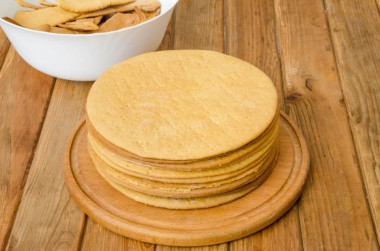
Here's a stack of cakes I got. There are 11 pieces in total, with a diameter of 20 cm. Plus more trimmings for sprinkling.
Step 21:
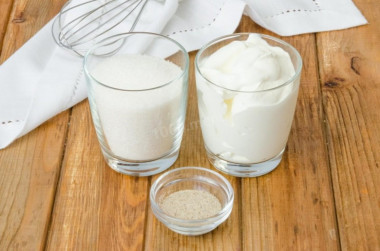
Prepare the cream. For the cream, it is very important to take fat sour cream, the fatter the better. If you do not have the opportunity to take sour cream with a fat content of 30%, then you can add a thickener or pre-weigh the sour cream in gauze to drain the excess liquid.
Step 22:
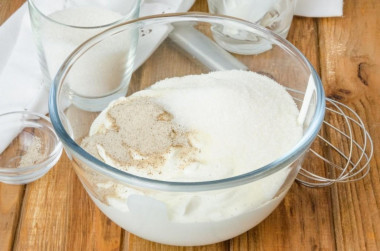
How to make cream? Combine sour cream, sugar and vanilla sugar in a bowl.
Step 23:
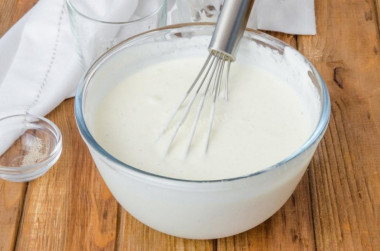
Mix with a whisk or even a regular spoon until the sugar dissolves. That's all, the cream for the honey cake is ready. I do not advise whipping it with a mixer, from this the cream can become liquid.
Step 24:
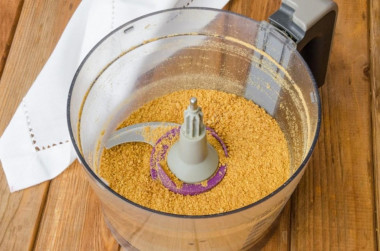
Make a crumb for sprinkling the cake. To do this, chop the trimmings to the state of fine crumbs. I used a food processor for this.
Step 25:
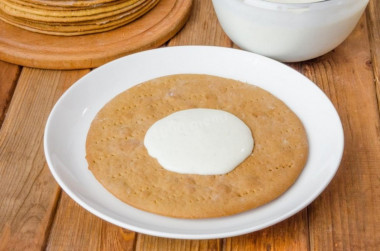
Assemble the cake, alternating cakes with cream.
Step 26:
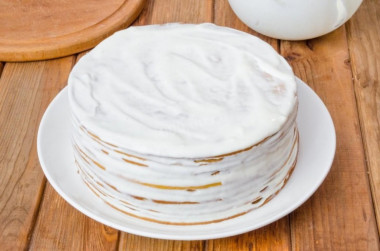
Cream the sides of the cake as well.
Step 27:
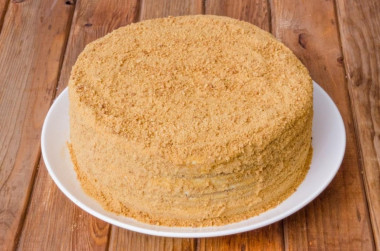
Carefully sprinkle the finished cake with crumbs on all sides. Send it to the refrigerator for at least two hours (preferably 5-6 hours) for impregnation.
Step 28:
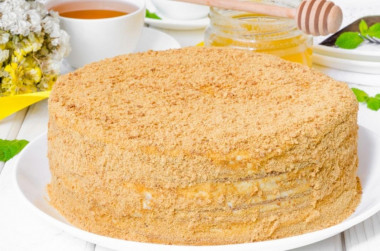
That's it. Our delicious and delicate honey cake with sour cream is ready.
Step 29:
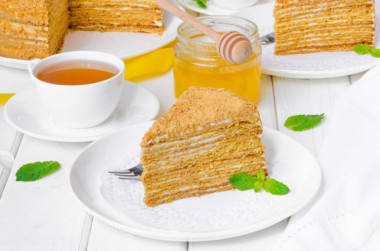
Bon appetit!
Be prepared for the fact that flour may need more or less than indicated in the recipe. Focus not on the amount of flour, but on the desired consistency of the dough. To avoid mistakes, read about flour and its properties!
Make it a rule that the amount of flour is never determined in advance when preparing flour and bread products! This indicator will always fluctuate, since flour can be of different humidity, differ in the degree of grinding and the level of gluten, and other indicators, which inevitably affects its ability to bind to the liquid mixture in the dough. Since it is impossible to do a laboratory test at home to determine all the parameters and indicators of flour, we recommend acting on the principle of "flour in water", that is, take liquids exactly according to the recipe, and add flour to the liquid component not all at once, but in parts, achieving the desired consistency (while flour may take a little more or on the contrary, less than in the recipe). Thanks to this technique, the proportions of the ingredients are more accurately preserved and the quality of the dough is not lost.
Keep in mind that everyone's ovens are different. The temperature and cooking time may differ from those specified in the recipe. To make any baked dish successful, use useful information about the features of ovens !
Caloric content of the products possible in the composition of the dish
- Sour cream with 30 % fat content - 340 kcal/100g
- Sour cream of 25% fat content - 284 kcal/100g
- Sour cream with 20 % fat content - 210 kcal/100g
- Sour cream of 10 % fat content - 115 kcal/100g
- Sour cream - 210 kcal/100g
- Chicken egg - 157 kcal/100g
- Egg white - 45 kcal/100g
- Egg powder - 542 kcal/100g
- Egg yolk - 352 kcal/100g
- Ostrich egg - 118 kcal/100g
- Honey - 400 kcal/100g
- Whole durum wheat flour fortified - 333 kcal/100g
- Whole durum wheat flour, universal - 364 kcal/100g
- Flour krupchatka - 348 kcal/100g
- Flour - 325 kcal/100g
- Granulated sugar - 398 kcal/100g
- Sugar - 398 kcal/100g
- Butter 82% - 734 kcal/100g
- Amateur unsalted butter - 709 kcal/100g
- Unsalted peasant butter - 661 kcal/100g
- Peasant salted butter - 652 kcal/100g
- Melted butter - 869 kcal/100g
- Water - 0 kcal/100g
- Baking soda - 0 kcal/100g
- Vanilla sugar - 379 kcal/100g

